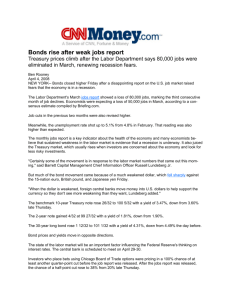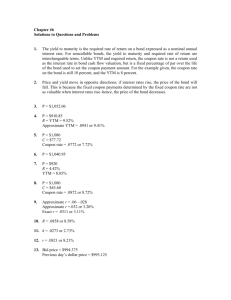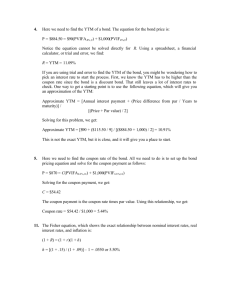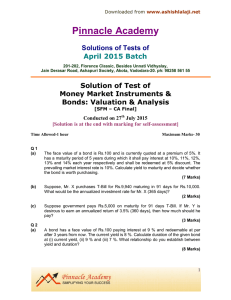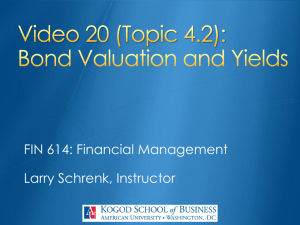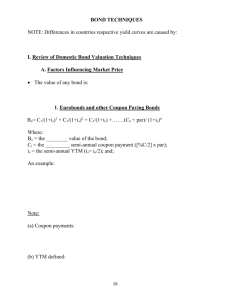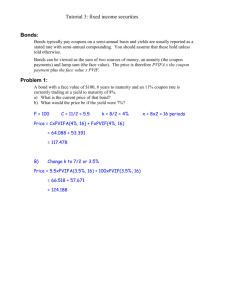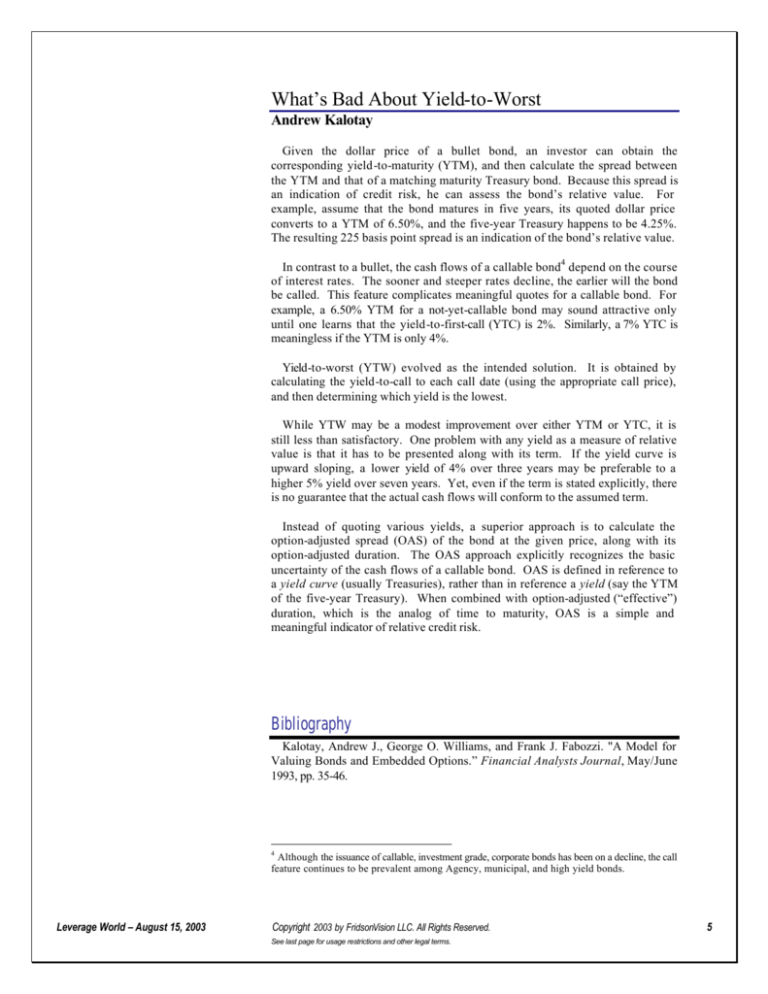
What’s Bad About Yield-to-Worst
Andrew Kalotay
Given the dollar price of a bullet bond, an investor can obtain the
corresponding yield-to-maturity (YTM), and then calculate the spread between
the YTM and that of a matching maturity Treasury bond. Because this spread is
an indication of credit risk, he can assess the bond’s relative value. For
example, assume that the bond matures in five years, its quoted dollar price
converts to a YTM of 6.50%, and the five-year Treasury happens to be 4.25%.
The resulting 225 basis point spread is an indication of the bond’s relative value.
In contrast to a bullet, the cash flows of a callable bond4 depend on the course
of interest rates. The sooner and steeper rates decline, the earlier will the bond
be called. This feature complicates meaningful quotes for a callable bond. For
example, a 6.50% YTM for a not-yet-callable bond may sound attractive only
until one learns that the yield-to-first-call (YTC) is 2%. Similarly, a 7% YTC is
meaningless if the YTM is only 4%.
Yield-to-worst (YTW) evolved as the intended solution. It is obtained by
calculating the yield-to-call to each call date (using the appropriate call price),
and then determining which yield is the lowest.
While YTW may be a modest improvement over either YTM or YTC, it is
still less than satisfactory. One problem with any yield as a measure of relative
value is that it has to be presented along with its term. If the yield curve is
upward sloping, a lower yield of 4% over three years may be preferable to a
higher 5% yield over seven years. Yet, even if the term is stated explicitly, there
is no guarantee that the actual cash flows will conform to the assumed term.
Instead of quoting various yields, a superior approach is to calculate the
option-adjusted spread (OAS) of the bond at the given price, along with its
option-adjusted duration. The OAS approach explicitly recognizes the basic
uncertainty of the cash flows of a callable bond. OAS is defined in reference to
a yield curve (usually Treasuries), rather than in reference a yield (say the YTM
of the five-year Treasury). When combined with option-adjusted (“effective”)
duration, which is the analog of time to maturity, OAS is a simple and
meaningful indicator of relative credit risk.
Bibliography
Kalotay, Andrew J., George O. Williams, and Frank J. Fabozzi. "A Model for
Valuing Bonds and Embedded Options.” Financial Analysts Journal, May/June
1993, pp. 35-46.
4
Although the issuance of callable, investment grade, corporate bonds has been on a decline, the call
feature continues to be prevalent among Agency, municipal, and high yield bonds.
Leverage World – August 15, 2003
Copyright 2003 by FridsonVision LLC. All Rights Reserved.
See last page for usage restrictions and other legal terms.
5


